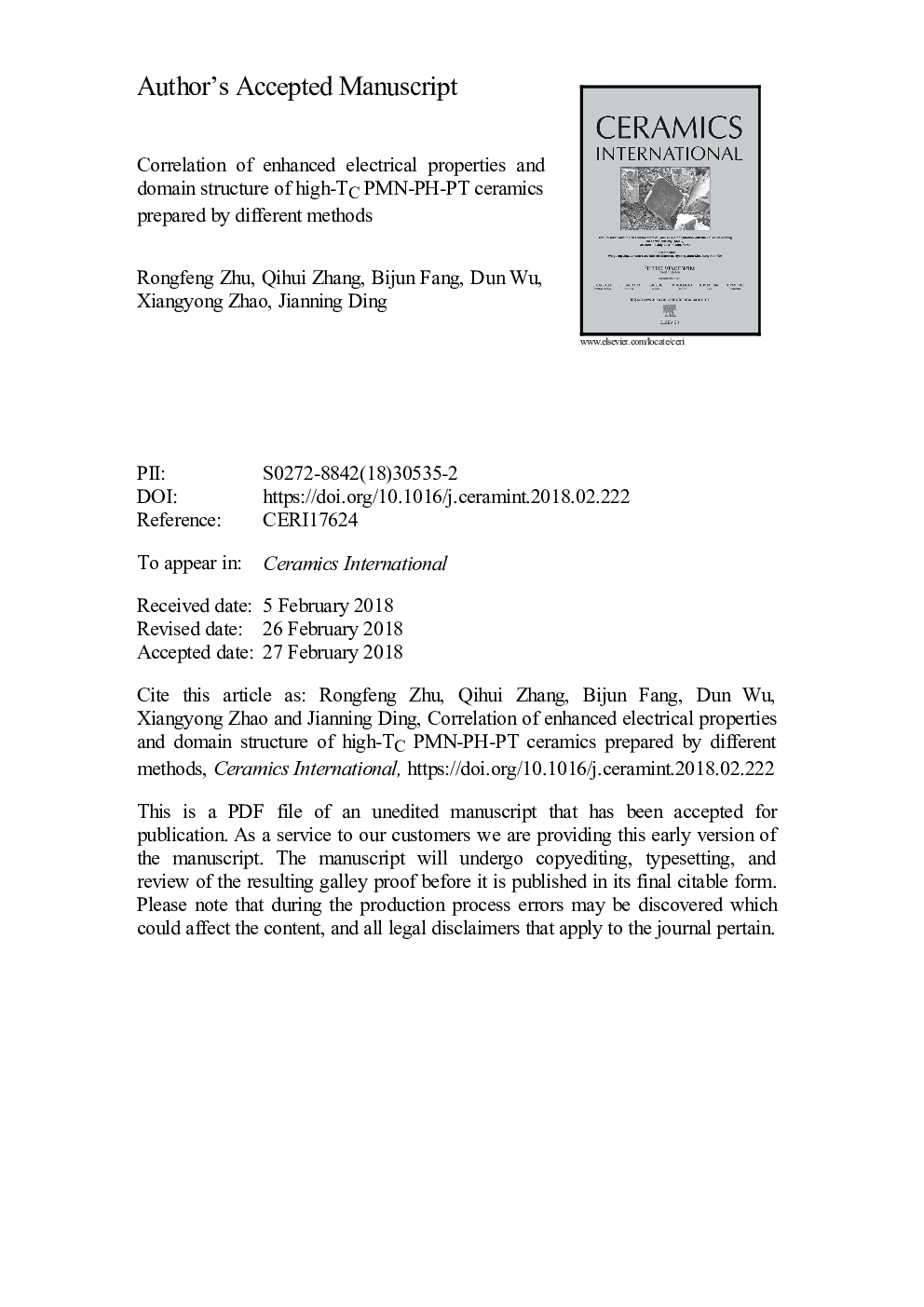| Article ID | Journal | Published Year | Pages | File Type |
|---|---|---|---|---|
| 7886873 | Ceramics International | 2018 | 27 Pages |
Abstract
The dielectric, ferroelectric and piezoelectric properties of the high-Curie temperature (high-TC) 0.15Pb(Mg1/3Nb2/3)O3-0.38PbHfO3-0.47PbTiO3 (0.15PMN-0.38PH-0.47PT) ceramics synthesized by three different methods were investigated. The 0.15PMN-0.38PH-0.47PT ceramics prepared by the partial oxalate route present the best electrical properties (TC =â¯291â¯Â°C, εm =â¯28,937, Pr =â¯32.89 μC/cm2, Ec =â¯9.35â¯kV/cm, d33 =â¯456.2 pC/N and Kp =â¯67.2%) and excellent thermal stability of the piezoactivity properties under TC. Piezoresponse force microscopy (PFM) and confocal Raman microscopy (CRM) were employed to probe the nanoscale mechanism responsible for the performance difference of the 0.15PMN-0.38PH-0.47PT ceramics prepared by three different methods, disclosing the existence of the fine stripe domains, which make up the big island domains. The interplay between the macroscopic properties and nanoscopic domain structures of the 0.15PMN-0.38PH-0.47PT ceramics has been revealed. The better ferroelectric and piezoelectric response arise from the smaller domain size, which reduces the domain wall energy; whereas the higher coercive field Ec detected by the polarization-electric field (P-E) loops results from the harder domain switching for the 0.15PMN-0.38PH-0.47PT ceramics prepared by the wet chemical synthesis techniques.
Keywords
Related Topics
Physical Sciences and Engineering
Materials Science
Ceramics and Composites
Authors
Rongfeng Zhu, Qihui Zhang, Bijun Fang, Dun Wu, Xiangyong Zhao, Jianning Ding,
